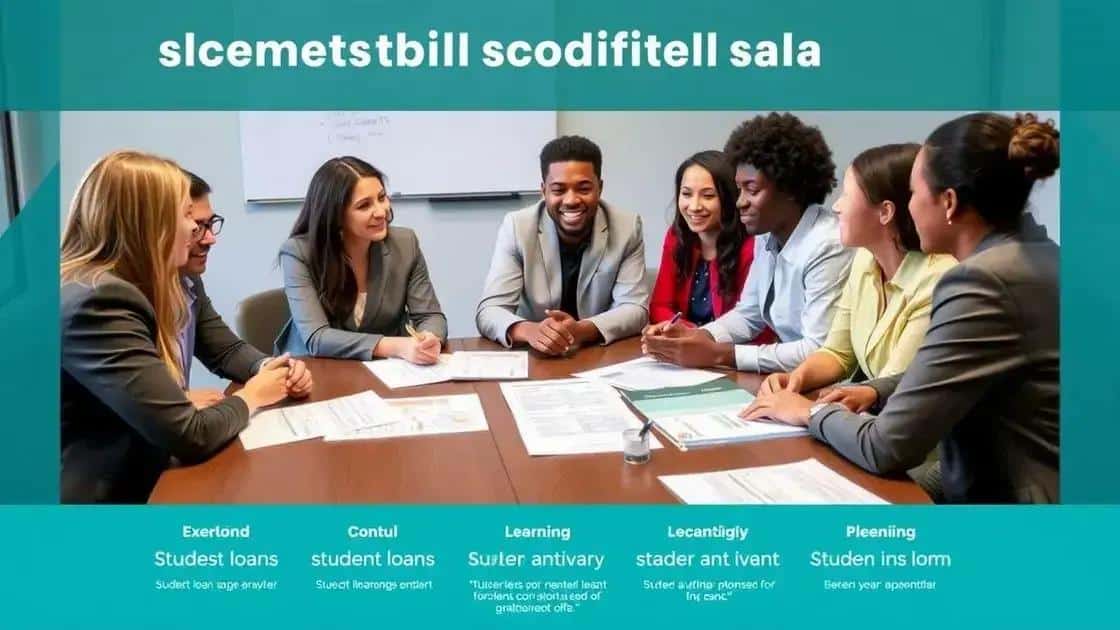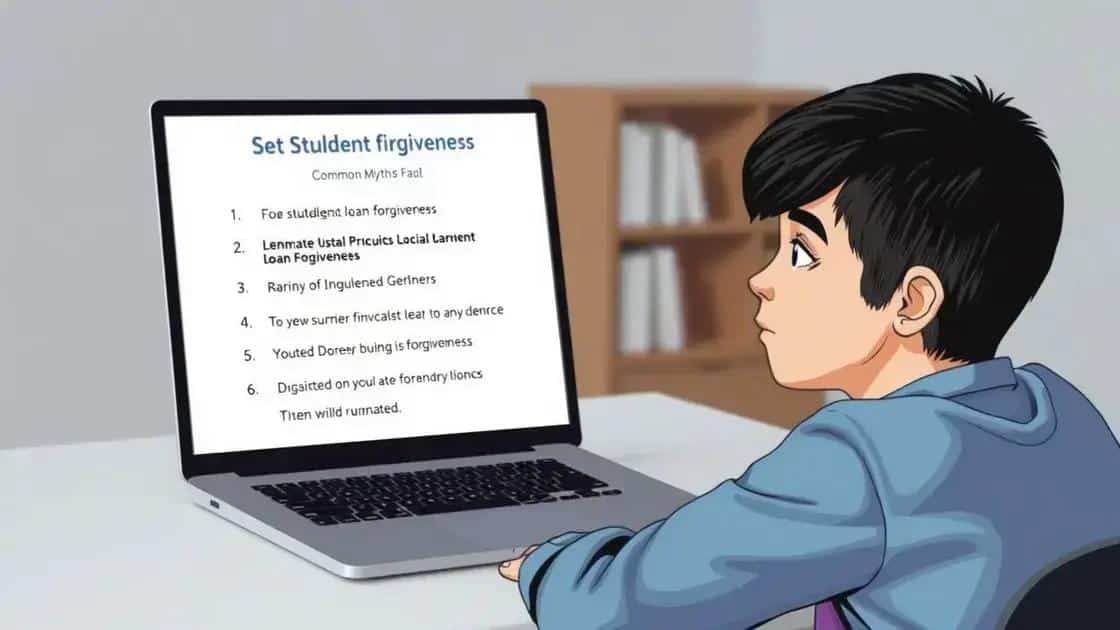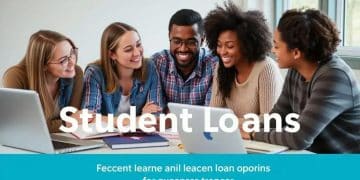Federal student loan forgiveness programs: what you need to know

Anúncios
Federal student loan forgiveness programs provide a pathway for eligible borrowers to have their debt reduced or eliminated, often requiring specific criteria such as employment in public service and a set number of qualifying payments.
Federal student loan forgiveness programs offer a beacon of hope for those struggling with debt. Have you ever wondered how these programs work? Let’s dive in and explore the possibilities!
Anúncios
Eligibility criteria for forgiveness programs
Understanding the eligibility criteria for forgiveness programs is crucial for anyone seeking relief from student loans. These programs can significantly reduce or eliminate your debt, but knowing if you qualify is the first step.
Who qualifies for federal student loan forgiveness?
Eligibility can depend on various factors, including your job, loan type, and repayment plan. Generally, here are some key requirements:
Anúncios
- Must have federal student loans, such as Direct Loans or FFEL Loans.
- Need to be on a qualifying repayment plan, like Income-Driven Repayment.
- Employment in a qualifying public service job may be required for certain programs.
Many borrowers wonder, “How long do I need to work to qualify?” Most programs require you to be employed in a qualifying job for a specific period. This is often ten years, especially for Public Service Loan Forgiveness.
Types of loan forgiveness programs
Different programs have varying criteria. Here are a few to consider:
- Public Service Loan Forgiveness (PSLF)
- Teacher Loan Forgiveness
- Income-Driven Repayment Forgiveness
Each program has unique requirements. For example, PSLF is specifically geared toward those who work in the public sector. On the other hand, Income-Driven Repayment Forgiveness is available after a set number of payments.
Staying informed about these eligibility criteria is essential as it helps you make educated decisions about your debt. Always check the latest program updates and requirements to ensure you meet the criteria for forgiveness.
Types of federal student loan forgiveness options

When exploring types of federal student loan forgiveness options, it is essential to know that various programs cater to different needs. These options can relieve significant financial burdens, but understanding each type is vital.
Public Service Loan Forgiveness (PSLF)
This program is designed for those working in public service jobs, including government and non-profit sectors. To qualify, you must make 120 qualifying monthly payments under a qualifying repayment plan while working full-time.
Teacher Loan Forgiveness
If you’re a teacher working in a low-income school or educational service agency, you might qualify for this forgiveness. You can receive up to $17,500 in forgiveness after five years of service.
Income-Driven Repayment (IDR) Forgiveness
Under this option, if you qualify for an IDR plan, you will have your remaining balance forgiven after 20 or 25 years of qualifying payments. This can be a beneficial choice for those whose income is lower than the average due to various circumstances.
These are just a few of the federal student loan forgiveness options available. Other programs, such as the National Health Service Corps Loan Repayment Program, focus on specific professions, such as healthcare. Each of these programs comes with unique eligibility requirements and benefits. It’s crucial to research and find the option that best fits your situation.
Taking advantage of these options can help ease the burden of student debt significantly. As such, always ensure you understand the specifics and how they apply to your circumstances.
Step-by-step guide to applying for forgiveness
Applying for student loan forgiveness can feel daunting, but breaking it down into manageable steps can make the process smoother. This guide will walk you through what you need to do.
Step 1: Determine Eligibility
Before moving forward, it’s crucial to find out if you qualify for any forgiveness programs. Review the specific requirements for each program, such as the Public Service Loan Forgiveness or Teacher Loan Forgiveness. Look into your loan type and the repayment plan you’ve been using.
Step 2: Gather Necessary Documents
Collect all needed documents, like proof of employment or income. You might need:
- Your student loan information.
- Tax returns and W-2 forms.
- Employment verification, if required.
Having these documents on hand will speed up your application process significantly.
Step 3: Complete the Application
Visit the appropriate website to complete your application. Follow the instructions carefully. Ensure that all sections are filled out correctly to avoid delays. If applying for PSLF, you will submit the Employment Certification Form annually.
Step 4: Submit and Monitor Your Application
Once you submit your application, keep track of its status. It can take time to process, so don’t hesitate to reach out if you haven’t received confirmation within a reasonable period.
Being proactive during this process can help ease your mind as you wait. Remember, staying informed will make the application much clearer and your path to forgiveness easier.
Common myths about student loan forgiveness

There are many common myths about student loan forgiveness that can confuse borrowers. Understanding the truth behind these misconceptions is essential for anyone considering applying for forgiveness.
Myth 1: All student loans are eligible for forgiveness
Not all types of student loans qualify for forgiveness. Only federal loans, such as Direct Loans or FFEL Loans, may be eligible. Private student loans do not qualify for these programs.
Myth 2: You don’t have to do anything to get forgiveness
Many borrowers think that forgiveness happens automatically. However, you must apply for forgiveness and meet specific criteria, including making qualifying payments and working in eligible employment.
Myth 3: You can get forgiveness after a few years
Some believe that they will automatically receive forgiveness after a short period of time. In reality, most federal forgiveness programs require several years of qualifying payments, often up to ten years for programs like the Public Service Loan Forgiveness (PSLF).
Myth 4: Forgiveness is guaranteed
While there are established programs for forgiveness, approval is not guaranteed. Each application is reviewed based on specific eligibility criteria, and some applications can be denied.
It’s crucial to separate fact from fiction when considering student loan forgiveness. By understanding these myths, borrowers can make informed decisions and navigate their options more confidently. Always check the latest guidelines and clarify any doubts with a financial advisor or the loan servicer.
FAQ – Frequently Asked Questions about Federal Student Loan Forgiveness
What types of loans are eligible for student loan forgiveness?
Only federal student loans, such as Direct Loans and FFEL Loans, qualify for forgiveness programs. Private loans do not.
How long does it take to get forgiveness?
It can take several years of qualifying payments, often up to 10 years for certain programs like Public Service Loan Forgiveness.
Do I need to apply for forgiveness?
Yes, you must apply and meet specific eligibility criteria; forgiveness is not automatic.
Are there common myths I should be aware of?
Yes, there are many myths, including the belief that all loans qualify or that you don’t need to do anything to get forgiveness.





